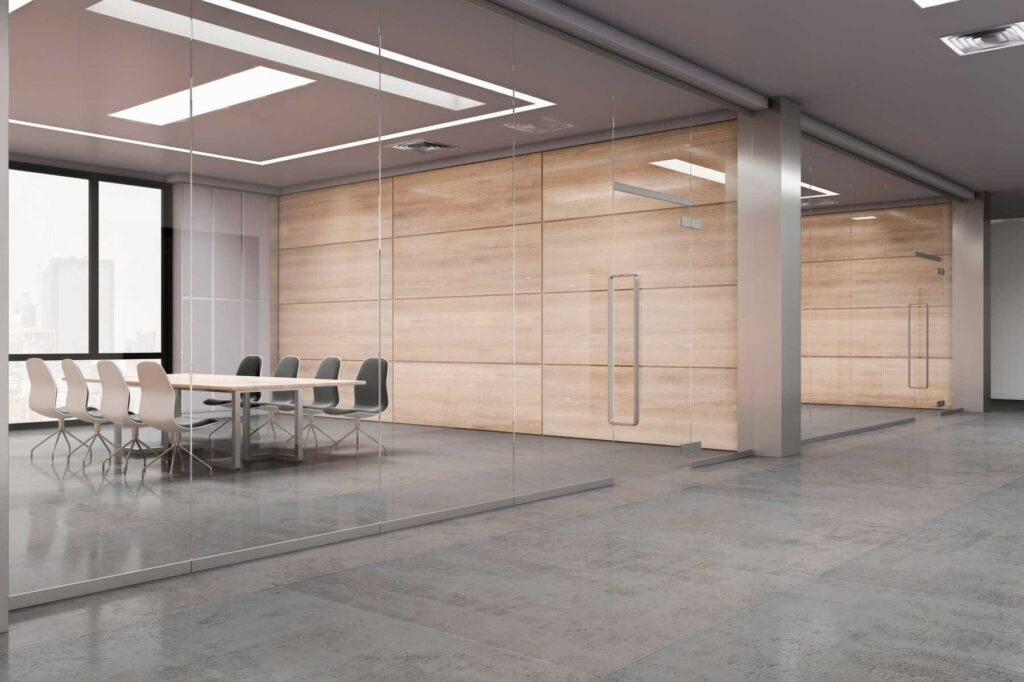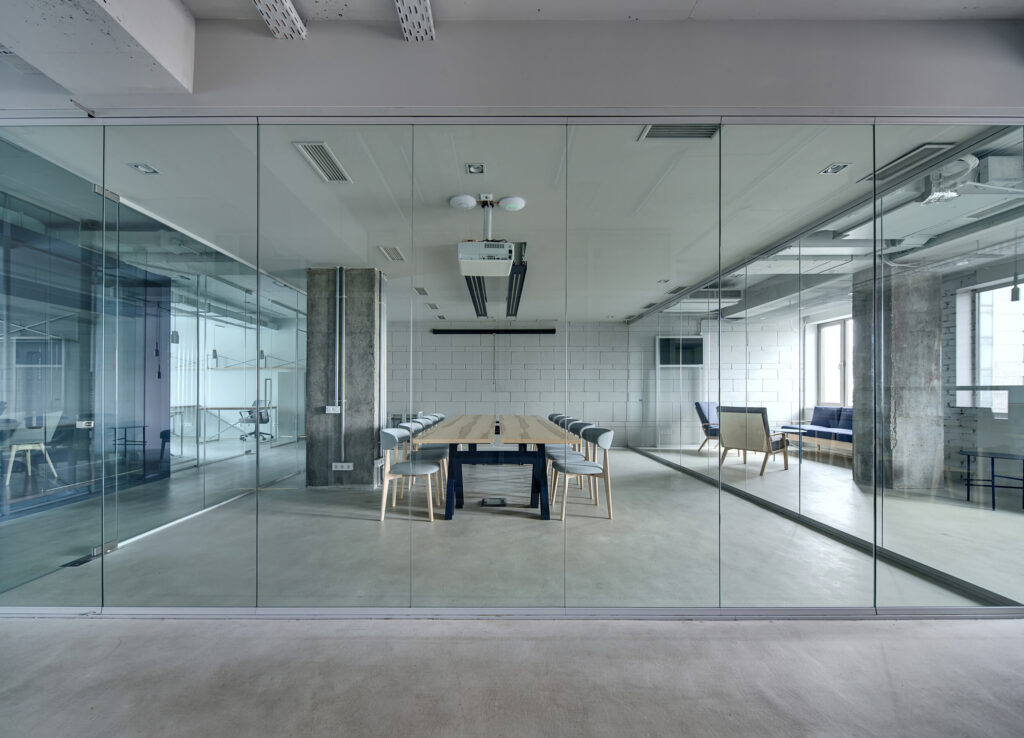Frameless Glass Partitions vs. Framed: Which is Best for Your Workspace?
Transform Your DesignIn today’s modern office environments, workspace partitioning is evolving rapidly. Glass partitions, both frameless and framed, are becoming increasingly popular in contemporary designs, especially in open-plan layouts. These partitions not only transform the physical space but also play a significant role in enhancing workplace productivity and aesthetics.
This article will explore the growing demand for glass partitions, compare frameless and framed options, and help you decide which is best for your workspace.
As open-plan office designs become the norm, businesses are looking for ways to strike the balance between maintaining collaborative environments and ensuring privacy for employees. Glass partitions are an ideal solution for achieving both.
These partitions offer the dual benefits of aesthetics and functionality. They allow for unobstructed natural light flow, reducing the need for artificial lighting, while also creating an open and airy ambiance. Glass partitions also encourage interaction among employees while maintaining boundaries that help with focus and concentration.
Understanding Frameless Glass Partitions
What Are Frameless Glass Partitions?
Frameless glass partitions are sleek and minimalistic, with no visible metal or wooden frames supporting the glass panels. These partitions are popular in businesses that prioritize contemporary, cutting-edge designs. The panels are often joined using discreet connectors or fixed into walls, ceilings, or floors, creating a seamless and uninterrupted glass wall effect.
Key Features and Benefits of Frameless Glass Partitions
Clean Aesthetic
Frameless glass partitions offer a smooth, uninterrupted surface, giving a clean, minimalist appearance to any workspace. This design is ideal for businesses looking to project a sophisticated and modern image.
Enhanced Light Flow
One of the primary benefits of frameless partitions is the maximized flow of natural light. The absence of a frame means no obstructions, allowing light to pass through more freely, creating a brighter and more welcoming environment.
Acoustic Solutions
Despite their seamless appearance, frameless glass partitions can be equipped with soundproofing features. Using thicker glass or specific acoustic glazing methods, these partitions can effectively reduce noise, making them suitable for offices that require a certain level of privacy.
Easy Customization
Frameless partitions offer a great deal of design flexibility. They can be customized in various shapes and configurations, including curved or angled glass. This allows businesses to tailor the partitions to their unique space requirements while maintaining a streamlined appearance.
| Feature | Frameless Glass Partitions |
|---|---|
| Aesthetic | Minimalistic, clean, modern |
| Light Flow | Maximized, unobstructed |
| Acoustic Performance | Soundproofing options available |
| Customization | High flexibility in design and configuration |
Understanding Framed Glass Partitions

What Are Framed Glass Partitions?
Framed glass partitions consist of glass panels encased in a frame, typically made from aluminum, steel, or wood. The frame acts as a structural support, enhancing durability and offering a more defined look. These partitions are commonly used in offices that require both functionality and a bold design element.
Key Features and Benefits of Framed Glass Partitions
Defined Structure
Framed partitions have a distinctive appearance that adds a structured, almost industrial feel to a space. The frame offers a clear separation between different areas, which can complement various design styles, from modern industrial to classic office environments.
Durability
The frame surrounding the glass adds an extra layer of strength, making framed partitions more durable over time. This makes them ideal for high-traffic areas or environments that need a long-lasting partition solution.
Acoustic Performance
The framing in these partitions enhances their soundproofing capabilities. The sealed edges between the glass and frame reduce noise leakage, which is especially beneficial in office settings where confidentiality and focus are priorities.
Customizable Frames
Framed glass partitions offer plenty of customization options for the frame itself. Whether you prefer sleek aluminum, warm wood, or strong steel, the variety of frame materials allows you to match the partition with the overall aesthetic of your office.
| Feature | Framed Glass Partitions |
|---|---|
| Aesthetic | Structured, bold, defined |
| Durability | Enhanced due to frame |
| Acoustic Performance | Superior sound insulation |
| Customization | Wide range of frame materials and finishes |
Comparing Frameless vs. Framed Glass Partitions
Aesthetic Differences
Frameless partitions are all about simplicity and elegance. Their minimalistic design gives the impression of an open, unobstructed workspace, making them ideal for companies wanting a cutting-edge look.
Framed partitions, on the other hand, offer a more defined and industrial feel. The visible frame adds structure, creating a bolder, more traditional appearance.
Practical Considerations
Cost
Frameless partitions are generally more expensive due to their sophisticated installation requirements and materials. The absence of a frame means that extra care and technology go into ensuring their stability and durability.
Framed partitions, while also stylish, tend to be more affordable and easier to install. The frame provides additional support, reducing the complexity of the installation process.
Installation Complexity
Installing frameless glass partitions requires precision and expertise, making the process more time-consuming and potentially disruptive to office operations. Framed partitions are easier to install due to their structural support, leading to quicker installation times.
Durability & Maintenance
Framed partitions typically last longer due to the strength added by the frame. Frameless partitions, while durable, rely more heavily on the quality of the glass and the installation method.
Soundproofing Capabilities
When it comes to acoustic performance, framed partitions typically outperform frameless ones. The frame creates a more sealed boundary, reducing noise leakage. Frameless partitions, while offering some soundproofing solutions, may not provide the same level of sound insulation as their framed counterparts.
Flexibility and Customization Options
Both frameless and framed partitions offer high levels of customization. Frameless partitions allow for a wide range of shapes and configurations, while framed partitions give businesses flexibility in choosing frame materials and finishes.
Which is Right for Your Workspace?

When to Choose Frameless Glass Partitions
Frameless glass partitions are ideal for businesses that prioritize aesthetics and want to create a sleek, modern office environment. They work well in industries such as tech, design, and media, where creativity and innovation are key elements of the workspace.
When to Choose Framed Glass Partitions
Framed glass partitions are best suited for offices that require durability and superior soundproofing. They are an excellent choice for more traditional corporate environments, as well as high-traffic spaces where partitions need to stand up to daily wear and tear.
Choosing between frameless and framed glass partitions depends on your workspace’s specific needs. Frameless partitions offer a clean, contemporary look with enhanced light flow, perfect for modern office designs. Meanwhile, framed partitions provide structure, durability, and superior soundproofing, making them ideal for businesses that value practicality alongside style.
Ultimately, the decision comes down to your office’s aesthetic goals, functionality requirements, and budget. By carefully considering these factors, you can select the perfect glass partition solution for your workspace.

